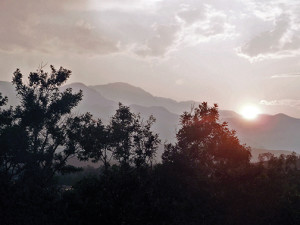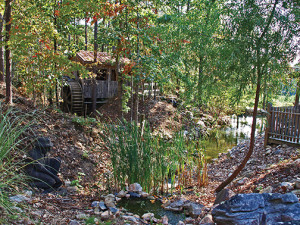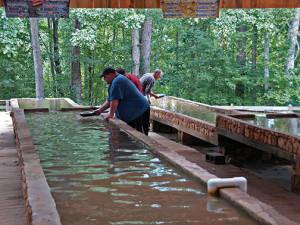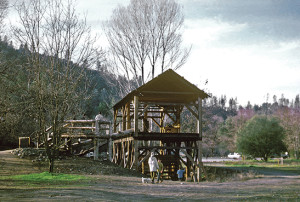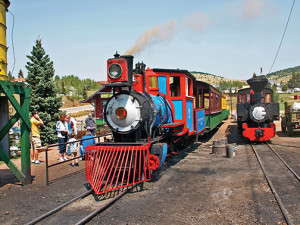Gold Rush: From Georgia to California
Posted on August 30, 2014 by bob in Travel
by Andrea Gross; photos by Irv Green (except as noted)
I enter my hotel room, open the drape, and there it is—Colorado’s Pikes Peak, one of the world’s most famous mountains, outlined against the setting sun. It’s the same view that greeted Katharine Lee Bates when, after a day atop the 14,000-foot granite mound, she penned the words to “America the Beautiful.” As I look out the window of our hotel I’m similarly inspired but less talented. Fortunately, my husband captures the scene with his camera.
Long before Bates wrote about the “spacious skies,” the mountain had energized other Americans. As the easternmost big peak of the Rocky Mountains, visible for 100 miles, it was a beacon for gold prospectors as they set forth on the last, and longest-lasting, American gold rush.
Where it all Began — Georgia, 1826
We begin our Gold Route Tour 1,500 miles from Pikes Peak in the small towns west and north of Atlanta. Both the Cherokee and the Spanish found nuggets of Georgia gold as early as the sixteenth century, but the real rush didn’t begin until the mid-1820s.
A film at Villa Rica’s Pine Mountain Gold Museum, built on the site of an old gold mine, tells us the local history. Afterwards we walk a three-mile trail dotted with old mining equipment. Interpretative signs tell us the equipment was abandoned when a man who was out hunting deer 100 miles to the northeast quite literally tripped over a golden rock.
Within a year, 15,000 men left Villa Rica to go to the new site, Dahlonega, which gets it’s name from the Cherokee word for “yellow.”
Dahlonega has a charming main square, a museum located in an historic courthouse, two gold mines and, best of all, a place where we can — or so we fantasize — strike it rich. After touring the underground Consolidated Gold Mines, we head to Crisson Gold Mine where we find several locals panning for gold.
“I come every weekend,” one confesses. “It’s fun, but I’d be better off playing the stock market.”
We leave without investing in a gold-panning experience.
The Rush in the West — California, 1849
The Dahlonega rush paled in comparison to the one that took place in California in the late 1840s. On January 24, 1848, James Marshall was building a mill for Captain John Sutter when he spotted a gold rock. News traveled fast, and soon an estimated 300,000 people headed west to try their luck and test their skill.
The old mill is long gone, but there’s a replica in Marshall Gold Discovery State Historic Park near Coloma, along with other reminders of gold rush days: a store mill, 19th century school, and two stores that are reminders of the Chinese who helped settle the area.
Later we drive south on Highway 49, which links old mining towns filled with quaint bed-and-breakfasts and award-winning wineries housed in restored gold-era buildings.
We reach Columbia State Park in about two hours, where costumed actors show us how folks lived during the golden days. We visit period-specific stores, see blacksmiths at work and take a ride in a stagecoach.
Pikes Peak or Bust — Colorado, 1859
Not long after disheartened prospectors abandoned California, gold was found in a Colorado creek. More than 50,000 ever-hopeful men, urged on by the slogan “Pikes Peak or Bust,” raced to find their fortune in the Rockies. The nearby towns of Cripple Creek and Victor became go-to, get-rich places.
We begin our tour at the Mollie Kathleen Mine, where we’re crammed into an elevator for a two-minute ride that takes us 1,000 feet underground.
A guide lets us experience what it was like for the miners by turning off the lights and turning on the drills. The darkness is oppressive, the noise deafening. I believe him when he says conditions are better now, but still I cross “miner” off my list of possible second careers.
To learn more about the history of the area, we board a narrow-gauge steam-engine railroad for a 45-minute ride through rocky hills covered with spindly pines and abandoned mine structures, some of which sit atop mines as deep as the Empire State Building is tall. Estimates are these hills still hold more than six billion dollars of gold. In the meantime, as trucks and drill rigs race around the stepped walls of the vast caldera where the mineral is hidden, Cripple Creek is almost as well known for its casinos as for its mining. It seems the search for gold takes many forms.










